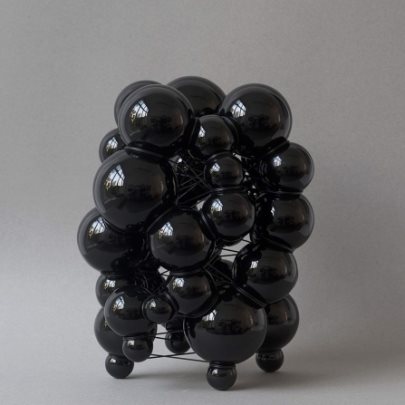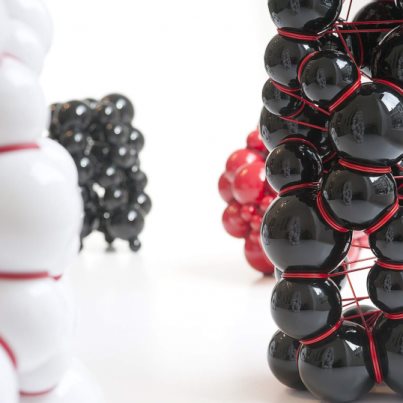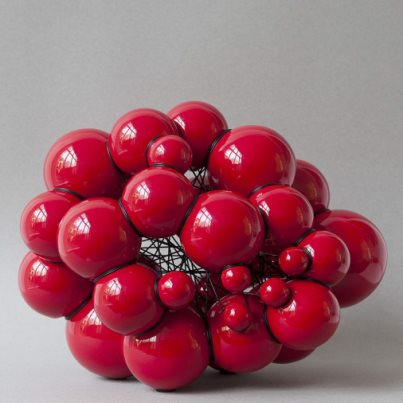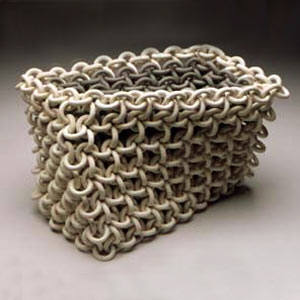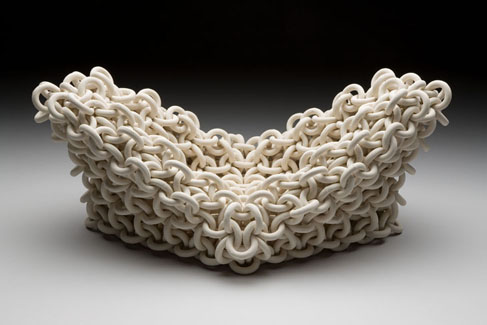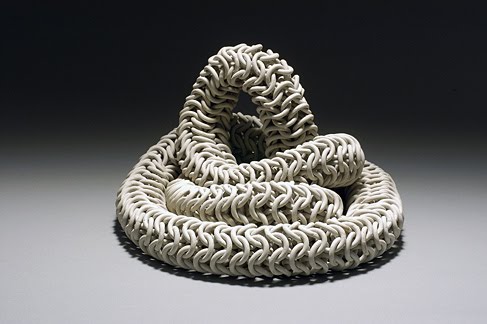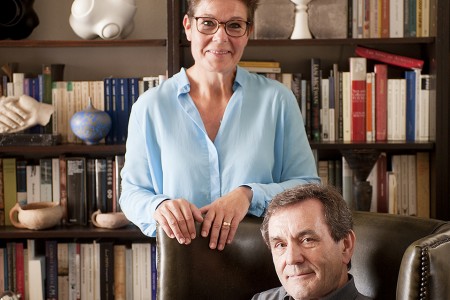New show at Puls Gallery — Steen Ipsen and Ruth Borgenicht
The following two artists will be showcased at the Puls Gallery from 19/10/2013 till 16/11/2013.
Steen Ipsen
Danish ceramics enjoys a particularly high international profile. One of its leading lights is without doubt Steen Ipsen. This new show continues his long association with Puls Gallery. Born in 1966 in Naestved, Ipsen works and lives in Copenhagen. He is one of the most important ceramists of the current generation. Even Ipsen’s most ambitious experiments and changes in direction invariably show a sure hand, an eye for potential, and a profound knowledge of materials and technique. Confronted with any piece by Ipsen, it is easy to imagine you have chanced upon an artifact from the cluttered office of a molecular biologist. Or perhaps a mathematician specializing in topology, that arcane branch of mathematics dealing with the way in which constituent parts are interrelated or arranged in two – and three-dimensional space.
Each successive development in his career has its roots, even inspiration in previous work. But be careful; even in repetition, he cannot step into the same river twice. There is an unbroken pattern of growth and evolution flowing throughout his entire oeuvre. Look carefully and you will find the fingerprints of all of his previous thinking in each new breakthrough piece. The works in this exhibition develop two threads of Ipsen’s explorations: the diversity and rich potential of spherical shapes and the infinite possibilities of abstract organic geometries. It is work that is the conjunction of techniques and spatial relationships that take them even further in their ability to speak to the viewer.
Some of the pieces consist of joined, simply colored spherical elements that are subsequently tied with colored strings and ropes of PVC and leather. Others explore materials in an organic pattern of broken or continuous connecting lines. The result is an abstract and highly spatial sculptural expression. Ipsen shares a fascination – perhaps even obsession – for the spherical shape with renowned German contemporary artist Gerhard Richter (Sphere, a 1992 single stainless steel polished sphere that reflects the entirety of its surrounding space and Belgian painter turned sculptor Pol Bury (12,000 Balls and the fountain sculpture L’Octagon). Other works, though seemingly rooted in non-Euclidian geometry, bring about associations of an erotic nature, in as much as they are reminiscent of early modernist sculptural experiments of the Bauhaus, Barbara Hepworth, and Henry Moore.
Ruth Borgenicht
It is interesting that American ceramist Ruth Borgenicht started out as a mathematician. Her undergraduate degree at the prestigious Rutgers University in the United States was in mathematics. However, she is quick to point out – perhaps with too much modesty given the extraordinary quality of her ceramic art – that “Love of mathematics was not enough to invent new ideas in this field. Unfortunately for me that also required genius. The discovery that I could be far more creative with clay than with math came to me during my last year of university.”
One need not be conversant in advanced math to recognize the inherent philosophical and mathematical depths to be found in her art. It can be strongly argued that the genius of her ceramic art is the equal to whatever she may have discovered had she limited herself solely to mathematics.
Much of the history of Europe, the Americas, and Asia can be ascribed to the quality of the chain mail worn under ancient and medieval armor. Made of tiny interlocking metal rings, it protected a body and still enabled mobile combat. It was a decisive factor in the outcome of innumerable battles and indeed the success of an entire war. Borgenicht uses the chain mail pattern and other woven patterns to create ceramic works that conjure up a sense of both permanence and defensive concealment. Like the ancient armor, her pieces are made of a fabric of moveable interlocking rings. Using clay to make a protective mesh is in many ways the ultimate contradiction. For how can it defend anything, much less itself? Visually stone like, the pieces appear strong and impenetrable, belying their inherent fragility.
Ruth Borgenicht is an international prizewinner and widely exhibited it museums and private collections.
